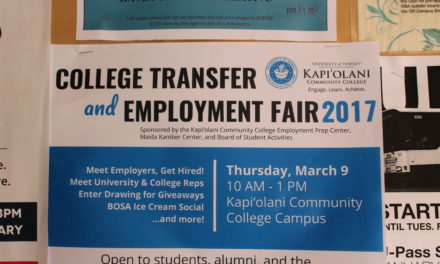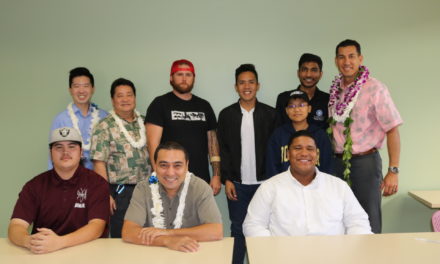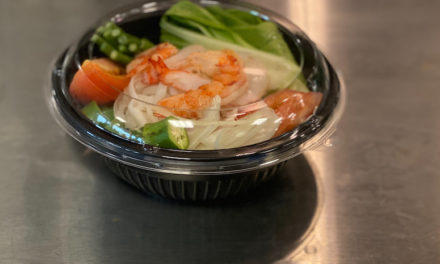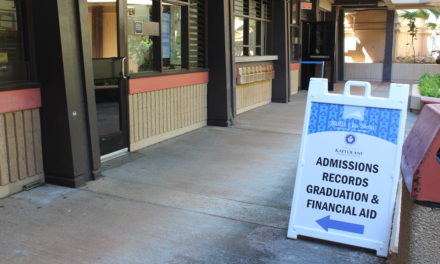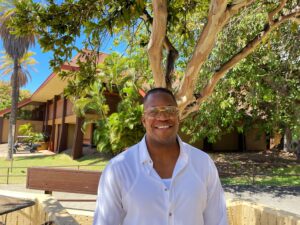By Kapiʻo News Staff
Here is a look at the happenings of Kapi‘olani Community College’s 18th annual International Education Week from Nov. 13-15.
TUESDAY
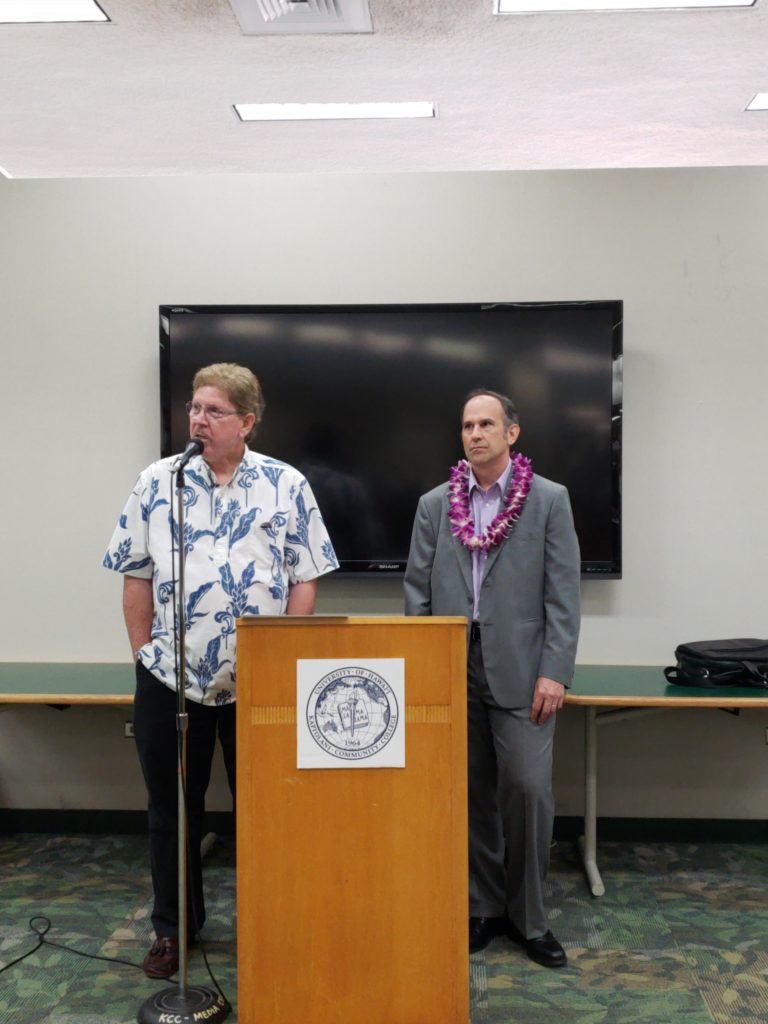
The coordinator of IEW, Dr. Carl Hefner (left), introduces the diplomat in residence, Jack Anderson, at the Lama Library alcove to start off IEW. (Photo by Ayoung Lee)
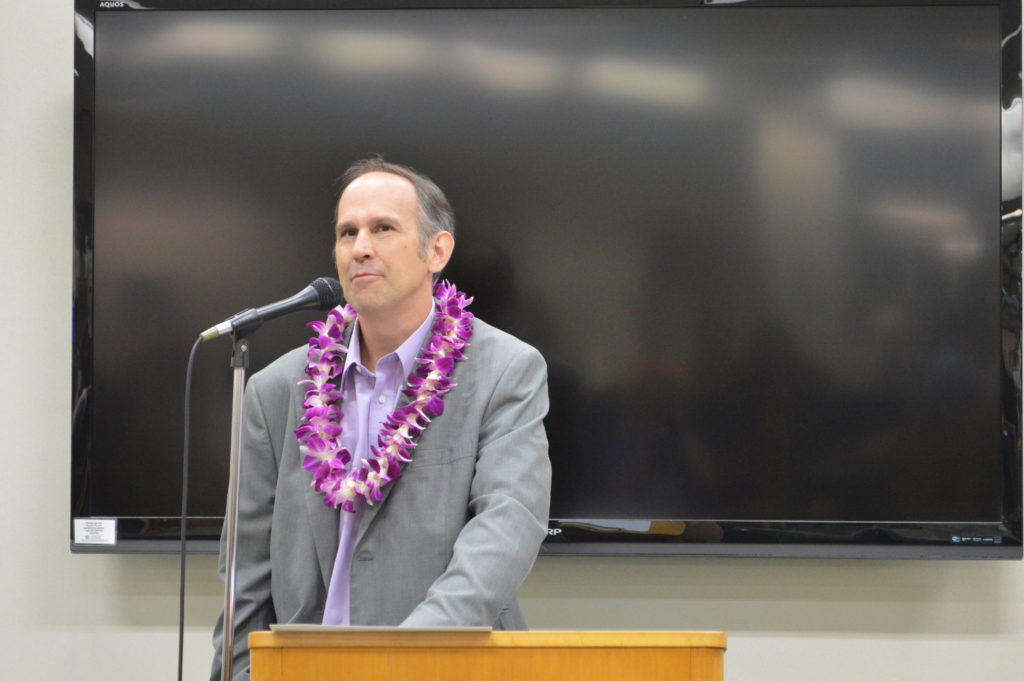
Guest speaker Jack Anderson spoke on the relationship between the U.S. and U.N. and the resolutions that get passed in house. (Photo by Ayoung Lee)
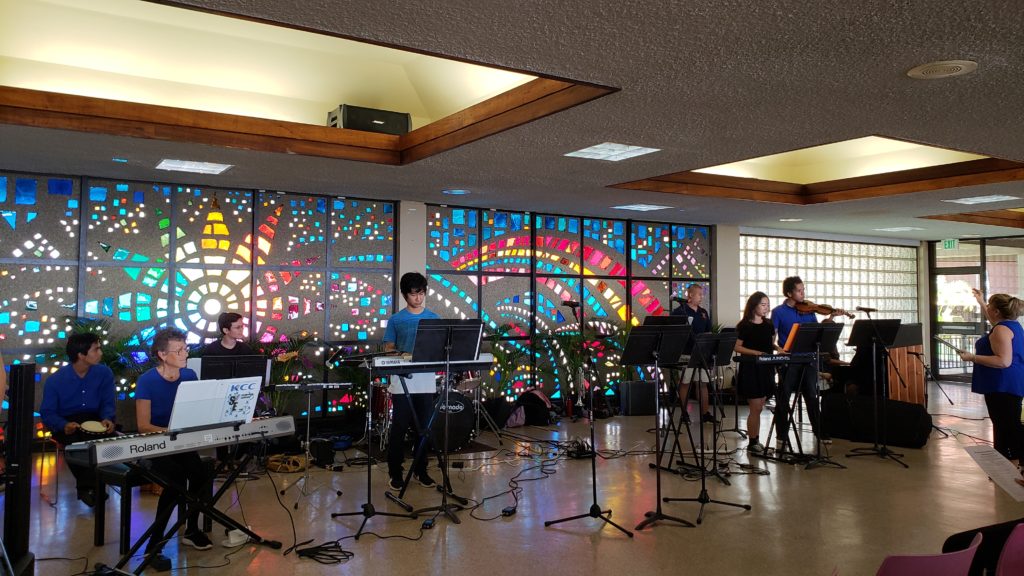
The MUS 206 class performed a variety of songs from different countries including China, Japan, Korea, and the Philippines in the ʻŌhiʻa cafeteria as the synthesizer ensemble directed by professor Anne Craig Lum. (Photo by Ayoung Lee)
WEDNESDAY
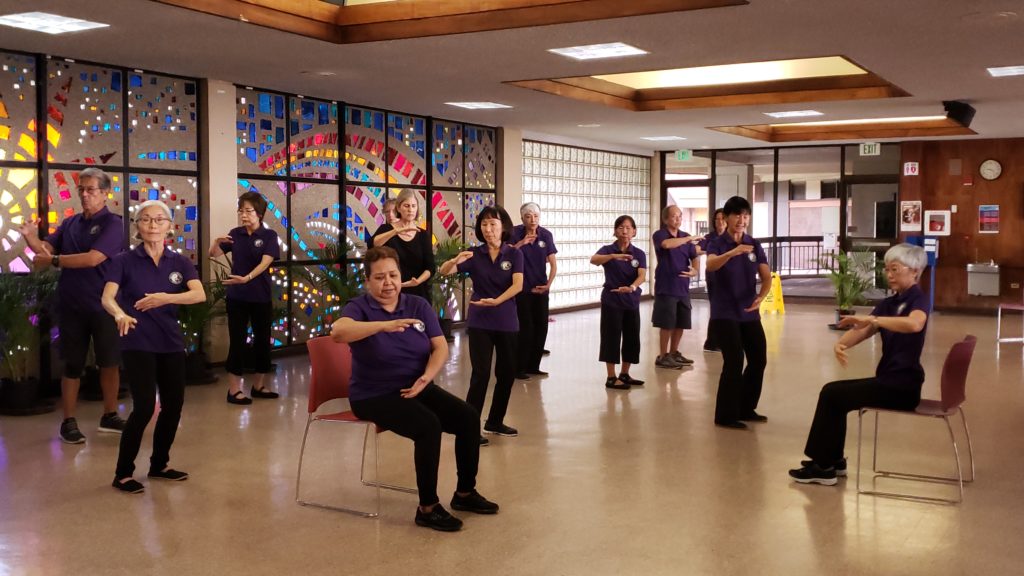
The Kupuna Education classes came out and did a demonstration of some Tai chi for arthritis for fall prevention. The demonstration was led by Toshimi Cho (standing in the front) and her students. (Photo by Ayoung Lee)
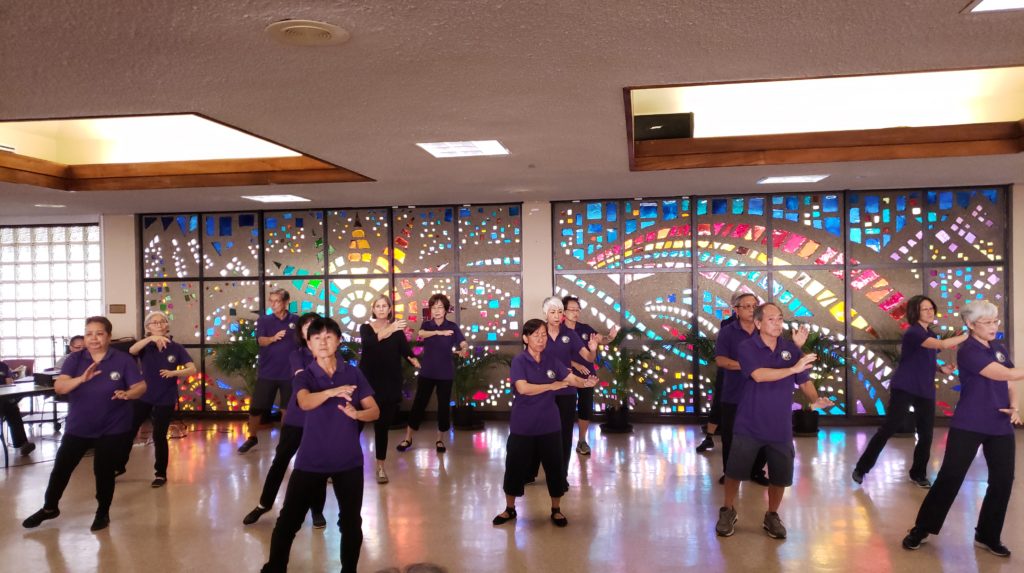
The Kupuna Education class is thinking of bringing Tai chi for diabetes into their curriculum. They encourage anyone of any age to join in. Classes can be found at kupunaeducation.com. (Photo by Ayoung Lee)
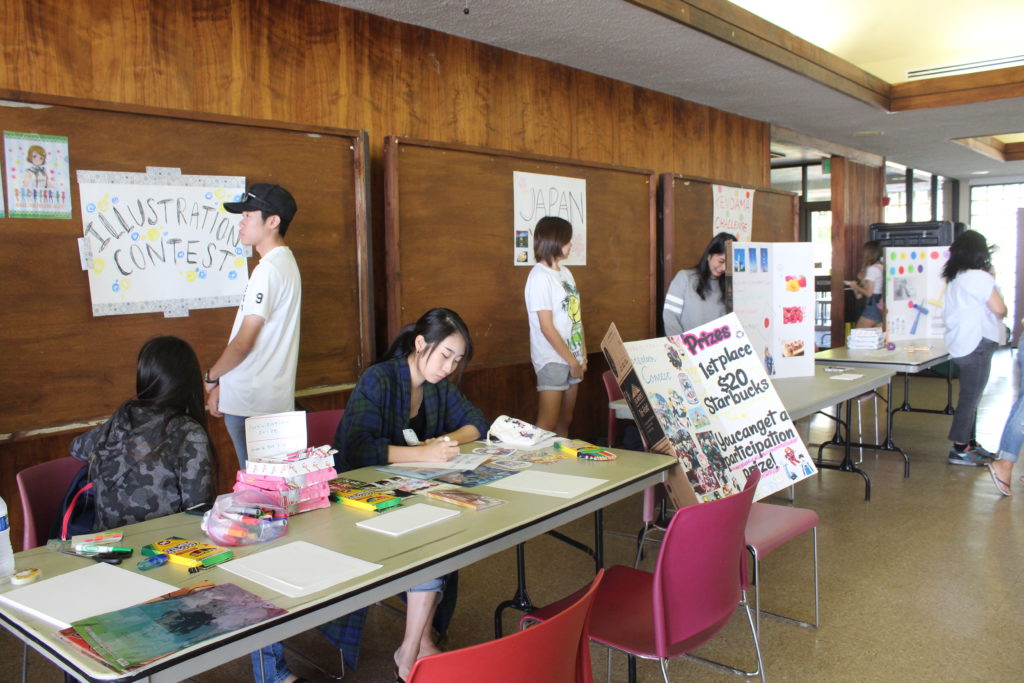
Students of the Japanese (JPNS) 290 class were in the Ohia Cafeteria to interact with students through Japanese themed contests. JPNS 290 is a Language and Culture course that is for native and bilingual students of the Japanese language. (Photo by Lexus Yamashiro)

JPNS 290 students Mao Wada (left) and Nao Iwasaki displayed a Japanese themed quiz, testing students on whether they knew what the highest tower in Japan is and to identify which picture showed Mt. Fuji. Students who could guess three answers correctly received a pack of Pocky, a Japanese chocolate covered biscuit snack. (Photo by Lexus Yamashiro)

Yoko Ho (right), a Liberal Arts major, hosted a Kendama challenge for students to play. Kendama, “ken” meaning “stick” and “dama” meaning “ball,” is a popular Japanese toy with the objective of swinging the ball onto any of the holding spots on the stick it is attached to with string. A poster board explained the parts of the toy along with a visual of how to play. (Photo by Lexus Yamashiro)
THURSDAY
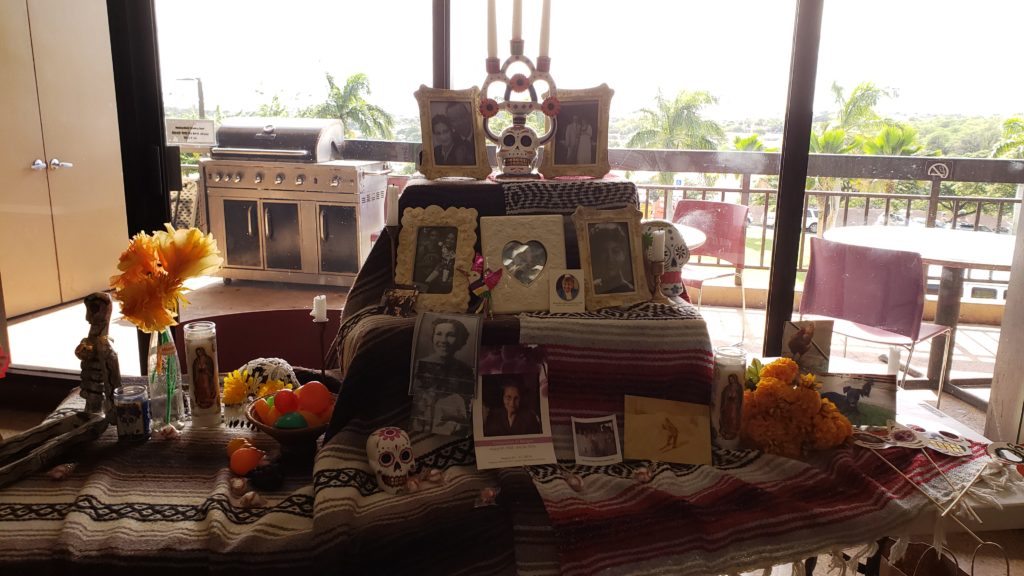
The Day of the Dead altar, or ofrendas, is set up in tiers for the generations of the deceased and pictures are used to evoke their spirits. Candles are lit to show the spirits to the altar and back to the dead world. The flowers’ scents are believed to make the spirits feel welcome and happy as they return. Salt is added as a purifier element while candy is set out to treat the children’s souls. The candy skulls represent the death and every moment after. (Photo by Ayoung Lee)
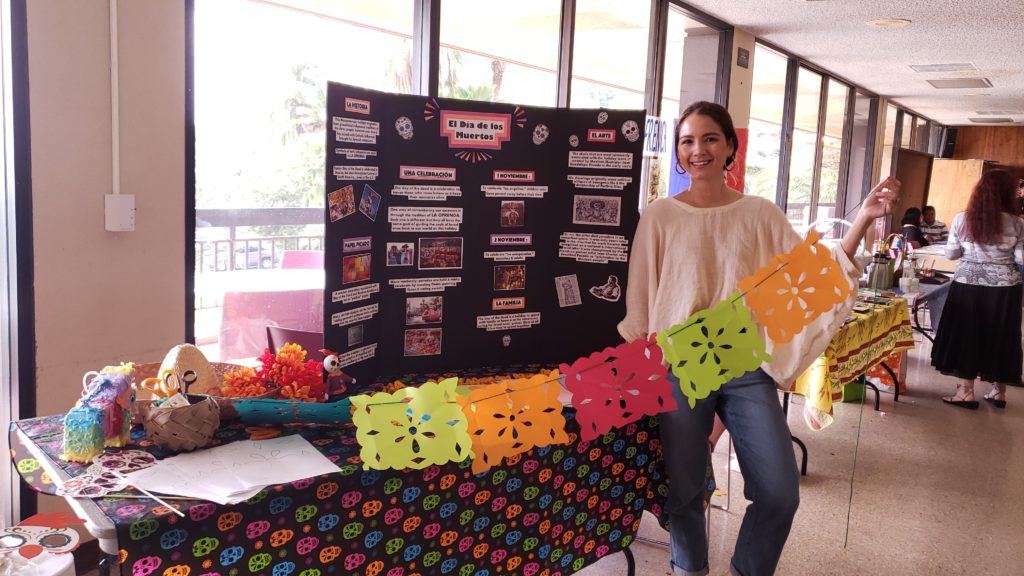
Spanish professor Anna Sachs holds her example papel picado (cut or “pecked” paper) that she did in front of her informative board on Day of the Dead. She appreciates the fact that the day got more recognition and awareness from the movie “Coco” by Disney Pixar. (Photo by Ayoung Lee)
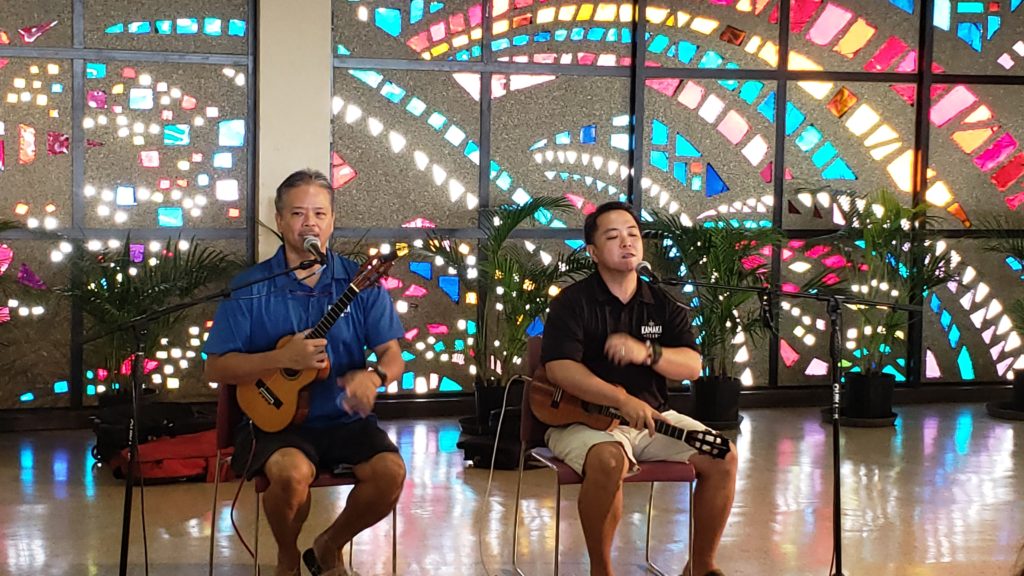
ʻUkulele artists Bryan Tolentino and Herb Ohta Jr. played songs from their cd’s and covered music from other artists. With audience members participation they gave out laughs, stories, wisdom, and ‘ukulele know-how between songs. (Photo by Ayoung Lee)
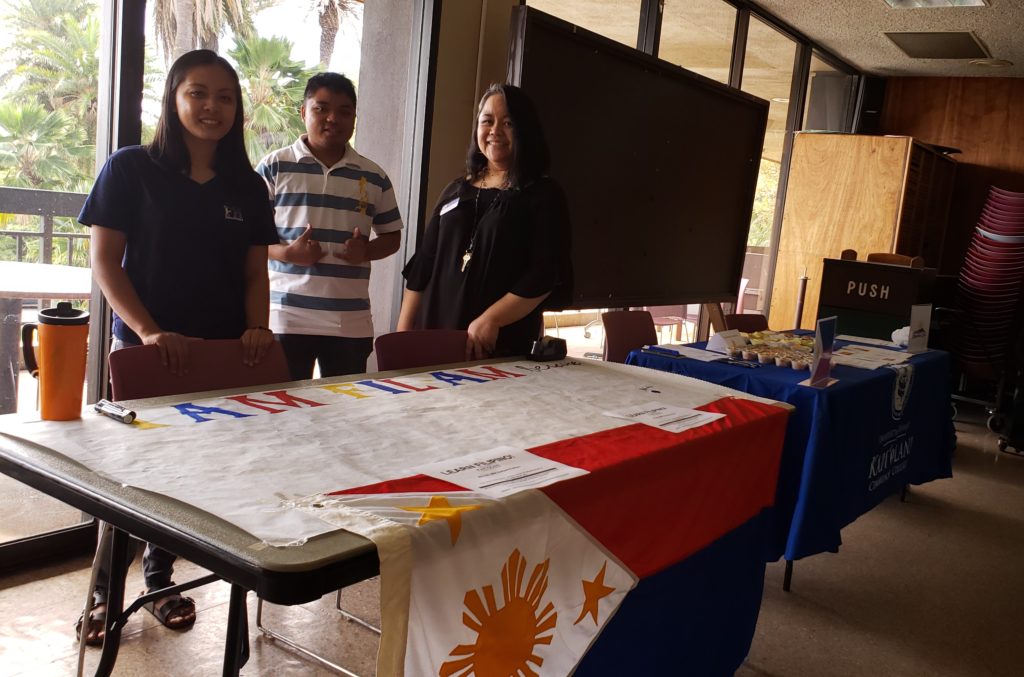
(From left to right) Co-adviser Precious Arao, who is also a lecturer for Filipino 101 and 102, Manny Pichay, an officer, and adviser Michelle Samson promoted the Bayanihan (Filipino) Club. The club is restarting after sending away most of their members from previous semesters to four-year colleges. The club is open to everyone and teaches about Filipino culture while also getting students involved in student services. The club also provides aid for school such as financial aid and transfer seminars. Filipino 102 can be taken in Spring 2019 and those interested can take the language placement test in the testing center to try to place in 102 for Spring rather than wait until Fall for 101. (Photo by Ayoung Lee)

The French 101 class being led by Professor Renée Arnold distributed bread with assorted brie and Moroccan mint tea. Their booth held an assortment of French treasures from a tea set to a tablecloth. Students, from left to right, Quinn McArthur, Natalie Clark, Mia Le, and Adoniel Alazam helped spread awareness of the beauty and fun of France and its culture. (Photo by Ayoung Lee)
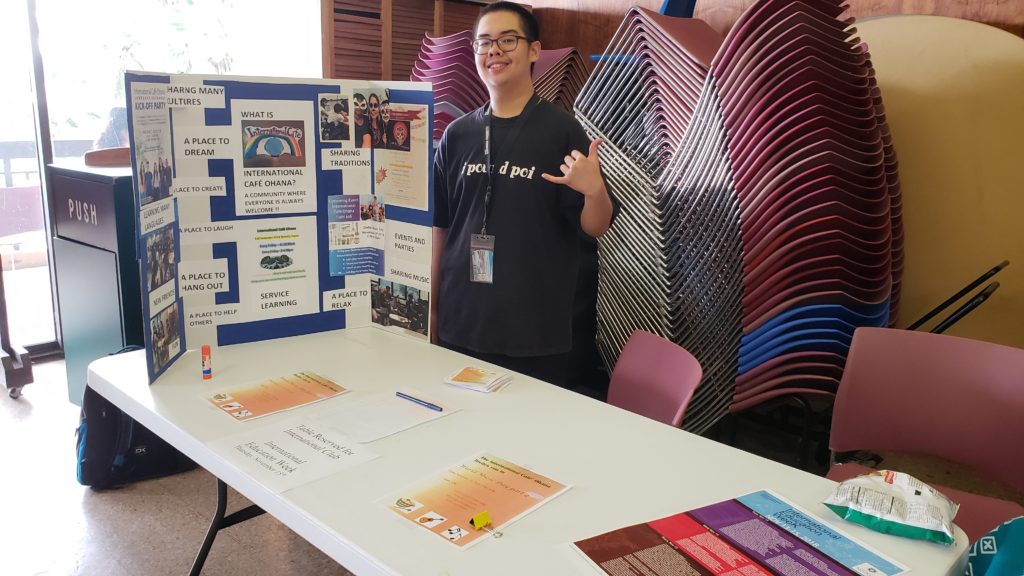
Student Kekoa Minoyama used his service learning opportunity in the International Cafe to hold musical events. Minoyama used the creative technique skills he learned in Interdisciplinary Studies 161 and decided to make World Music Day and World Music Day part 2 to include local and international students. His booth informed those of what he learned about during his service learning program and his events. (Photo by Ayoung Lee)
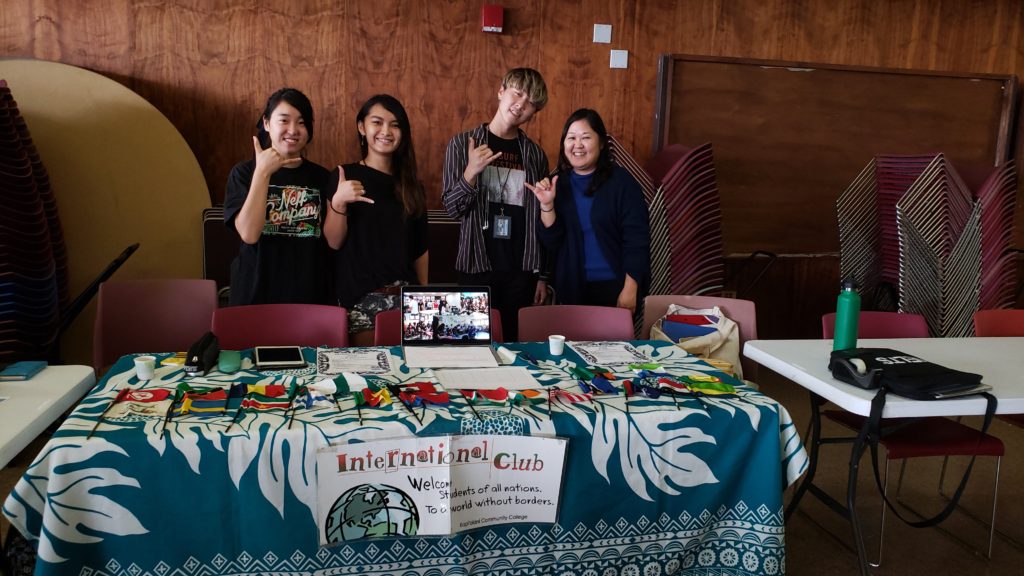
The International Club, also known as I-Club, describes itself as a “hanging out club.” From right to left, advisor Lani Suzuki, and student members Dong Min “Tomy” Han, Sally Watanabe, and Riko Iwaki were promoting the club looking for new members. The club often goes hiking, to the beach, or out to parks. They can also be found on Instagram at iclub_kcc. (Photo by Ayoung Lee)

Music 107 had an arrangement of instruments from different countries; Russia, China, Korea, Hawaii. It allowed students to touch and try out these instruments in order to garner interest in their class where they can learn the history of the instruments. Students (left to right) Zhongyi Yang, Angela Duran, Darren Yamane, and Sou Mouy Lau were accompanied by their professor Dr. Man Yang (second from the right). (Photo by Ayoung Lee)

Tania Chong came from the Honolulu Passport Agency to help students apply for passports, renewals, and to answer questions about passports and travel. Passport renewal forms have to be mailed in, but passports may only be renewed for adults if they had held an adult passport previously. First time passport applicants must walk in for their applications in person, but may walk into the office located on campus in ʻŌlapa 112. (Photo by Ayoung Lee)

